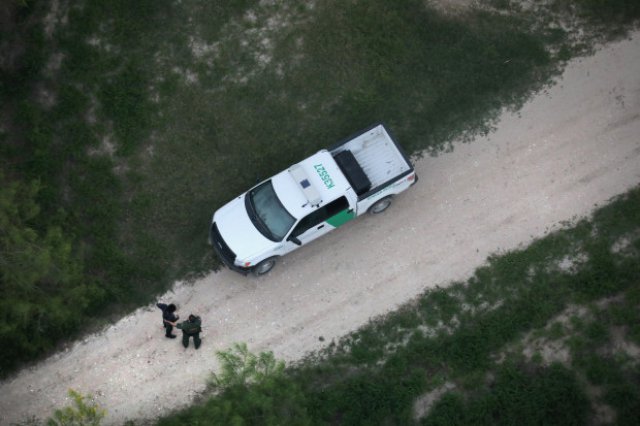US Customs and Border Protection is looking at a more mobile way to monitor the border: consumer drones. The agency is currently soliciting proposals for small unmanned aerial systems, similar to consumer drones manufactured by DJI and Parrot, to be deployed by US Border Patrol agents in the field.
First described in a contractor solicitation notice last summer, the proposed aircraft would be small enough to be carried in a truck and simple enough to be deployed by a single border agent in less than five minutes. The crafts would also be outfitted with sophisticated sensors, which may include infrared cameras and facial-recognition capabilities. The solicitation specifically asks for “sUAS,” a term typically used for consumer-grade drones under 55 pounds, and a significant contrast from the Predator B drones that have patrolled the border in the past.
One technical document included with the solicitation imagined a drone that could “distinguish between natural and artificial features, and between animals, humans, and vehicles at long range.” The drone would also include “facial recognition capabilities that allow it cross-reference any persons identified with relevant law enforcement databases.” The scenario meant as a hypothetical, illustrating the type of capability CBP is looking for rather than indicating a specific requirement. Still, those facial-recognition capabilities would work well with Homeland Security’s IDENT database, which currently contains more than 170 million fingerprints and facial images collected from non-citizens as they enter the United States. The FBI’s facial-recognition checks reach even further, scanning across 411 million photos in state and federal databases.
CBP officials said that kind of in-the-field identification could be immensely valuable to agents in the future, particularly crossed referenced with criminal records.
“When a Border Patrol agent is out in the field, they may be very far from backup, they may not have great comms coverage,” said Ari Schuler, co-lead of CBP’s Silicon Valley office, which is managing the project. “If they encounter an armed group of human traffickers, for instance, they need to know whether those traffickers have a criminal record or are known to have assaulted an officer.”
The interface of the drones may also differ significantly from consumer drones. The solicitation expressed interest in Siri-style voice commands, since border agents may be carrying heavy equipment or need to maintain freedom of movement while operating the drone. Officials also expressed interest in multi-spectral sensors that could detect distress in plants, sometimes a result of off-road border crossings or drug meetings.
The solicitation has already drawn significant interest from companies. Last week, the CBP announced it was moving up the submission deadline due to a flood of interest: companies will now have until April 27th to submit proposals for the project. Three companies have already received Phase One awards for prototyping, with projects for drone-mounted millimeter wave scanning and lightweight radar systems announced in December. Customs officials say there are more awards in the pipeline.
According to one contractor, CBP’s focus has been on devices that can document an incident and alert other agents without being vulnerable to hacking or signal interception. “Anybody that can do all those things in a short period of time is going to get the money,” said Derek Lyons, a technology scout at Beyond the Drone who has talked with Customs on behalf of BirdsEyeView Aerobotics. “The big question is, how quickly can they get something? Small companies can have a hard time estimating how far along they are.”
CBP’s move to smaller drones comes after the agency’s struggles with Predator drones, which have proven both more expensive and less effective than anticipated. An Inspector General report in 2014 found that the program had spent at least $62.5 million to operate its fleet of 10 drones over the course of a year. Despite early hopes, the program failed to lower the cost of border surveillance or lead to a significant increase in apprehensions. The drones were also the target of significant spoofing and GPS jamming efforts.
The personal drone project is particularly relevant as Customs and Border Patrol moves toward the construction of a physical wall at the Mexican border. In a congressional hearing yesterday, Homeland Security secretary John Kelly said the wall is unlikely to cover every portion of the border, and would need to be supplemented with surveillance equipment and other technology.
CBP officials say technological support will be crucial even in areas where a physical wall is built.
“Even where you see physical barriers or infrastructure today, it’s in conjunction with agents and surveillance technology,” said CBP assistant chief Chris Pietrzak. “There are alternative mechanisms by which we can establish surveillance, and sUAS is one of them.”
Source: The Verge

